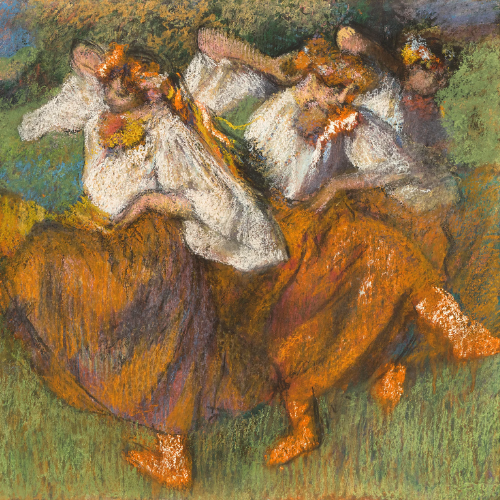The Art of Investing
SOUTHEASTERN ANTIQUING AND COLLECTING MAGAZINE, March 2009--As the global community experiences an economic slowdown resulting from the credit crisis and the volatility of financial markets, many investors have turned to alternative investment opportunities to replace or support their existing holdings. While fine art collecting has often been viewed as a luxury investment for a small group of affluent individuals, it is increasingly becoming a safe and stable alternative to traditional investments. Art investments often yield higher returns over time with less susceptibility to market fluctuation. In addition, the growth of new markets such as Russia, China and the Middle East have created a surge in the sector as global demand for a finite supply of art and antiques grows.
Although typical investment values have declined in the past 24 months, art prices continued to climb. According to a recent art market confidence index, art prices rose last year an average of eighteen percent, solidly outperforming the S&P 500 and making art an excellent portfolio diversifier.
There is significant opportunity in the current financial climate for a well-informed and savvy investor to acquire values that can be leveraged into solidly performing long-term investments. These investments can yield both a financial return and the satisfaction and enjoyment of owning and displaying a significant work of art or historically-significant antique.
Doing Your Homework. It is important to look at several criteria as your collecting evolves from a mere hobby to a serious investment strategy. Collecting art is a very personal endeavor. While taste should certainly factor into your buying decisions, every investor should take time to research a defined area of interest or genre extremely well before jumping headfirst into the game. The better informed your decision making is, the better the quality your collection and your potential return will be.
As with traditional investing, it is strongly recommended that you work with an experienced reputable dealer to act as your advisor and advocate in purchasing decisions. A seasoned dealer will be able to work in this capacity, keep an eye on the market for you, and advise while scanning the horizon for opportunity on your behalf.
Collections of superior value and importance are those whose pieces were selected primarily for their quality, rarity or provenance. Pieces that have the potential to yield the highest return should have high marks in the following categories:
*Maker: High value items are most often crafted by a well-known or respected maker, one that is widely reputed to create beautiful items of the highest quality. These items offer a safe and stable investment because they are names that are well known within the general community.
*Condition: The item must be in excellent condition, and all decorative items as well as structural items must be intact.
*Rarity: Is the piece extremely rare or even unique? Look for items that cannot be easily found, or can only be found otherwise within museum collections. The more rare the item, the higher the value.
*Provenance: Part of the enjoyment and value of a piece stems from the story surrounding its creation and existence through time. If an item has interesting provenance and stems from a legendary time period, the value of the item will increase. Additionally: if the item was owned by someone famous or notable, this detail can raise the value from negligible to high
Beginning the Journey. While strategic and informed investing will ultimately yield a solid financial return, perhaps the greatest satisfaction for an art and antiques investor comes from ownership of a significant object or work of art. When selecting investment items, follow the golden rule of collecting and find something you love and stick with it. Consider the following genres of art and antiques as you develop your collection:
*19th Century Paintings: The opportunities for collecting solid 19th century paintings at reasonable prices remain abundant in today's market. A collector, armed with a certain degree of knowledge and even greater enthusiasm, can go a long way in assembling a collection worthy of the effort. If recent history is any indication, fine artworks from this century should continue to post healthy gains. And while monetary appreciation can in no way be guaranteed, the potential for upward gains remains favorable.
*Silver: Many modern families opt to commemorate special occasions and milestones with the purchase of beautiful silver, which is then passed down through generations and evolves into family heirlooms. This is true throughout the centuries, and it is possible to get beautiful pieces with extremely important historical significance, which gives the piece a higher value. Additionally, families can adapt antique silver acquisitions into their own traditional family pieces, where they can gain both financial and sentimental value.
*Antique Globes: For many years, globes were precious and available only to kings and nobility. Expensive and challenging to produce, they were held in the highest reverence. To own a globe meant to possess power and knowledge of all the known lands. They were, in many cases, the ultimate status symbol. Today, antique globes offer a glimpse into the past, a virtual snapshot of the world as it was or was known to be at the time. The finer examples are quite rare and collecting them should be done with great care and attention.
Final Thoughts. Art collecting is a serious and highly-rewarding journey that should be taken in stride and with a degree of diligence. But along this sometimes bumpy road, keep in mind that the true nature of art is not so much about dollars and cents but more importantly, its power to inspire, give joy and motivate an appreciation for the world around you. Regardless of value, a beautiful work of art can be enjoyed on a more personal level every single day.
Bill Rau is president of M.S. Rau Antiques in the French Quarter of New Orleans. Established in 1912, it is one of the country's oldest and largest dealers of antiques and fine art.







